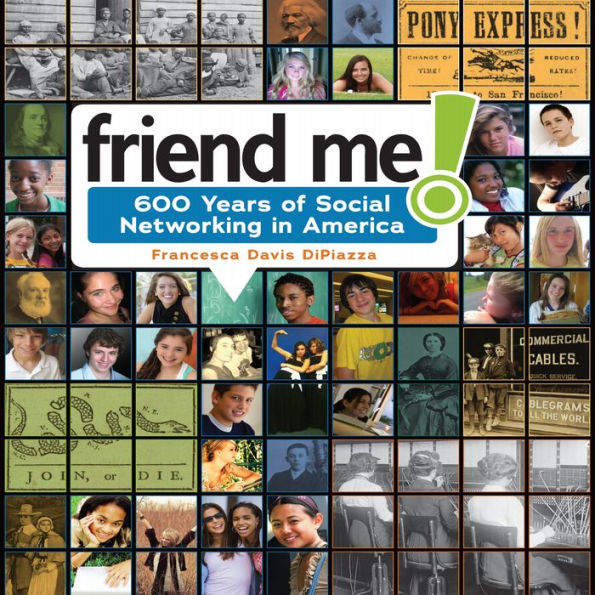What do Facebook, Twitter and LinkedIn have in common with coffeehouses, broadsides and the Sears, Roebuck & Co. mail-order catalogue? They are all types of social networking. Using examples from hundreds of years of American history, DiPiazza shows readers that long before the Internet or even electricity, there was plenty of social networking going on. The author defines social networks as "groups of people connected by common interests and needs." With that broad definition, she proceeds to explain how ring shouts organized by slaves, calling cards, telegrams, radio and telephones are all examples of social media. Clear text explains the essential role social networking plays in such things as cooperative ventures, the structure of communities, the exchange of ideas and knowledge and the organization of political protests. The book also notes that along with the great strides advanced technologies have brought to social networking, there are also dark sides, such as bullying, fraud and cyber-stalking. Short chapters liberally illustrated with photographs and other archival material take readers chronologically from pre-Columbian North America to today. What this book does best is place current modes of social media and their impact in a historical context and encourage readers to think about social networking in a whole new way. (bibliography, further reading, index, primary source quotations, source notes, websites) (Nonfiction. 10-18)
Anyone who texts recognizes "LOL," "2G2BT," and "PRW" as shorthand for "laughing out loud," "too good to be true," and "parents are watching." But did you know that in the 1800s-when your great-great-great-grandparents were alive-telegraph operators used similar abbreviations in telegrams? For example, "GM," "SFD," and "GA" meant "good morning," "stop for dinner," and "go ahead." At the time, telegrams were a new and superfast way for people to network with others.
Social networking isn't a new idea. People have been connecting in different versions of circles and lists and groups for centuries. The broad range of social media includes wampum belts, printed broadsides (early newspapers), ring shouts (secret slave gatherings with singing and dancing), calling cards, telegrams, and telephones. The invention of the Internet-and e-mail, text messaging, and social utilities such as Facebook and Google+-is just the latest way in which humans network for fun, work, romance, spiritual bonding, and many other reasons.
Friend Me! takes readers through the amazing history of social networking in the United States, from early Native American councils to California's Allen Telescope Array (ATA), where researchers are hoping to interact with extraterrestrial beings. Learn how Americans have been connecting in imaginative ways throughout history, and you'll see social networking in a whole new light.
Anyone who texts recognizes "LOL," "2G2BT," and "PRW" as shorthand for "laughing out loud," "too good to be true," and "parents are watching." But did you know that in the 1800s-when your great-great-great-grandparents were alive-telegraph operators used similar abbreviations in telegrams? For example, "GM," "SFD," and "GA" meant "good morning," "stop for dinner," and "go ahead." At the time, telegrams were a new and superfast way for people to network with others.
Social networking isn't a new idea. People have been connecting in different versions of circles and lists and groups for centuries. The broad range of social media includes wampum belts, printed broadsides (early newspapers), ring shouts (secret slave gatherings with singing and dancing), calling cards, telegrams, and telephones. The invention of the Internet-and e-mail, text messaging, and social utilities such as Facebook and Google+-is just the latest way in which humans network for fun, work, romance, spiritual bonding, and many other reasons.
Friend Me! takes readers through the amazing history of social networking in the United States, from early Native American councils to California's Allen Telescope Array (ATA), where researchers are hoping to interact with extraterrestrial beings. Learn how Americans have been connecting in imaginative ways throughout history, and you'll see social networking in a whole new light.

Friend Me!: 600 Years of Social Networking in America

Friend Me!: 600 Years of Social Networking in America
FREE
with a B&N Audiobooks Subscription

Editorial Reviews
Product Details
| BN ID: | 2940170163458 |
|---|---|
| Publisher: | Lerner Publishing Group |
| Publication date: | 01/01/2017 |
| Series: | Nonfiction - Young Adult |
| Edition description: | Unabridged |
| Age Range: | 12 - 17 Years |
Videos


